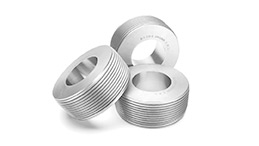
Nov . 11, 2024 13:59
Back to list
pressure reducer
Understanding Pressure Reducers A Key Component in Fluid Control Systems
In various industrial applications, maintaining a consistent pressure is crucial for the proper functioning of machinery and equipment. Pressure reducers, also known as pressure regulators, play a pivotal role in achieving this consistency. These devices are designed to lower and regulate the pressure of a fluid (gas or liquid) flowing through a system, ensuring that downstream equipment operates safely and efficiently. This article delves into the function, importance, types, and applications of pressure reducers.
Function of Pressure Reducers
The primary function of a pressure reducer is to convert high-pressure fluid into a lower, more manageable pressure. It does this by utilizing a spring-loaded diaphragm mechanism that reacts to changes in downstream pressure. When the downstream pressure drops below a predetermined set point, the diaphragm moves, allowing more fluid to pass through. Conversely, if the downstream pressure exceeds the set point, the diaphragm restricts the flow, thereby stabilizing the output pressure. This feedback mechanism ensures that downstream systems receive a constant pressure supply, which is essential for their optimal performance.
Importance of Pressure Reducers
Pressure reducers are critical in a range of industries. In gas distribution systems, for example, they ensure that natural gas is delivered at safe and usable pressures to homes and businesses. In manufacturing settings, maintaining consistent pressure helps to avoid equipment damage and ensures product quality. Without pressure reducers, equipment could experience fluctuations that lead to inefficiencies, increased wear and tear, or even catastrophic failures.
Moreover, pressure reducers enhance safety. By regulating pressure, they prevent excessive build-up that could result in dangerous leaks or explosions. In applications involving hazardous gases or fluids, pressure reducers are essential to mitigate risks associated with high-pressure systems.
Types of Pressure Reducers
There are several types of pressure reducers, each designed for specific applications. The most common types include
1. Single-Stage Pressure Reducers These are typically used in applications where the required pressure reduction is straightforward. They are simple in design, making them cost-effective and easy to maintain.
pressure reducer

2. Two-Stage Pressure Reducers For applications requiring more precise control of pressure, two-stage regulators are ideal. They are capable of providing a more stable output pressure by employing two reduction stages, which minimize fluctuations.
3. Backpressure Regulators These are utilized to maintain a specific upstream pressure. They are often found in processes where it is essential to hold back the pressure of a fluid while allowing a controlled flow.
4. Electronic Pressure Regulators These offer advanced control features through electronic sensors and actuators, allowing for precise accuracy in applications where conventional methods may fall short.
Applications of Pressure Reducers
The applications of pressure reducers span a wide range of industries, including
- Oil and Gas In the exploration and processing of oil and gas, pressure reducers are vital for controlling the pressure of flammable gases and liquids during transport and processing. - Water Treatment In water supply systems, pressure reducers ensure that the water provided to consumers is at a safe and consistent pressure, preventing damage to plumbing systems while ensuring adequate flow.
- Food and Beverage In this industry, pressure reducers are employed in various processes, such as carbonation of beverages and maintaining pressure in packaging systems to ensure product integrity.
- Manufacturing In various manufacturing processes, consistent pressure control can impact production quality, process efficiency, and equipment longevity.
In conclusion, pressure reducers are essential components in many fluid control systems, ensuring safety, efficiency, and reliability. Their ability to maintain consistent pressure across various applications is crucial for the smooth operation of numerous industries. Understanding the importance and functionality of pressure reducers is key for engineers and operators looking to optimize their systems and enhance safety across the board. Whether in gas distribution, manufacturing, or any other sector, the role of pressure reducers cannot be overstated, making them a fundamental part of modern industrial infrastructure.
Next:
Latest news
-
Safety Valve Spring-Loaded Design Overpressure ProtectionNewsJul.25,2025
-
Precision Voltage Regulator AC5 Accuracy Grade PerformanceNewsJul.25,2025
-
Natural Gas Pressure Regulating Skid Industrial Pipeline ApplicationsNewsJul.25,2025
-
Natural Gas Filter Stainless Steel Mesh Element DesignNewsJul.25,2025
-
Gas Pressure Regulator Valve Direct-Acting Spring-Loaded DesignNewsJul.25,2025
-
Decompression Equipment Multi-Stage Heat Exchange System DesignNewsJul.25,2025

